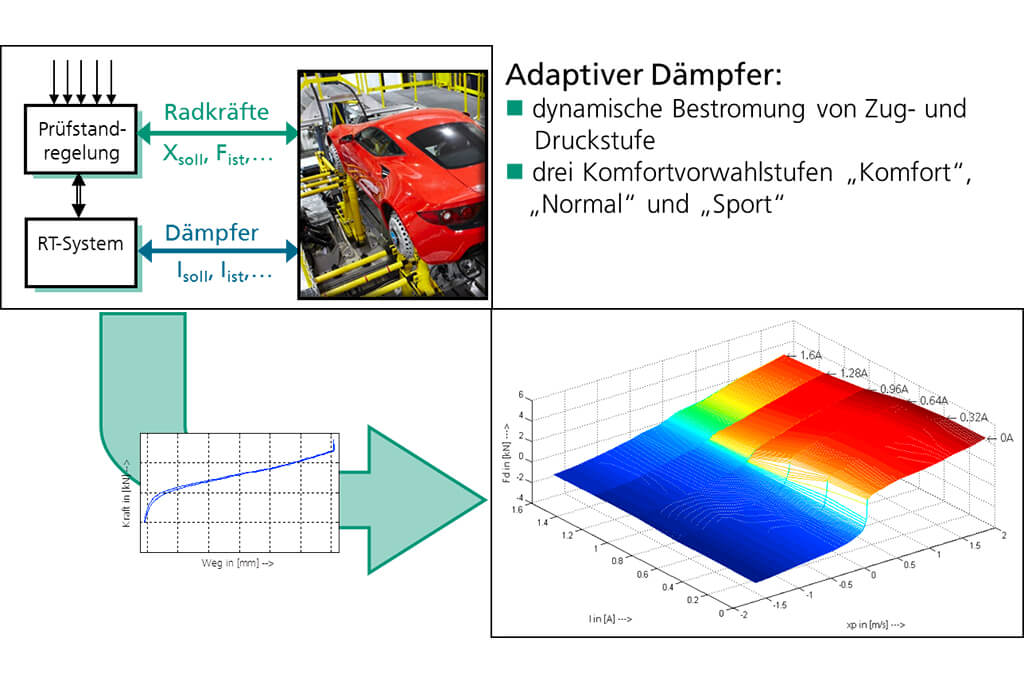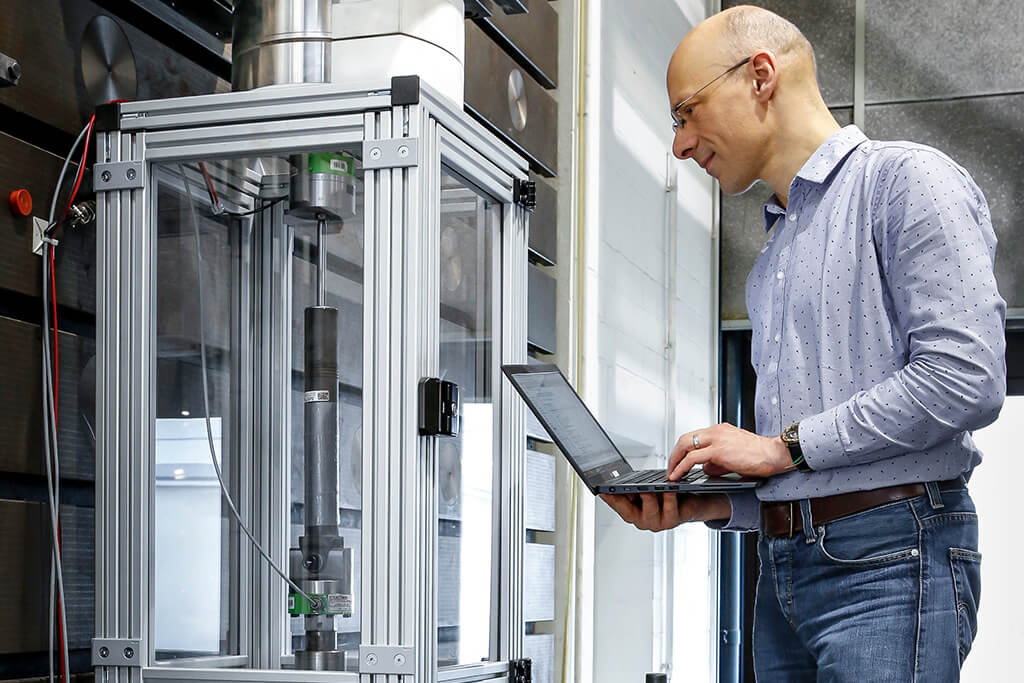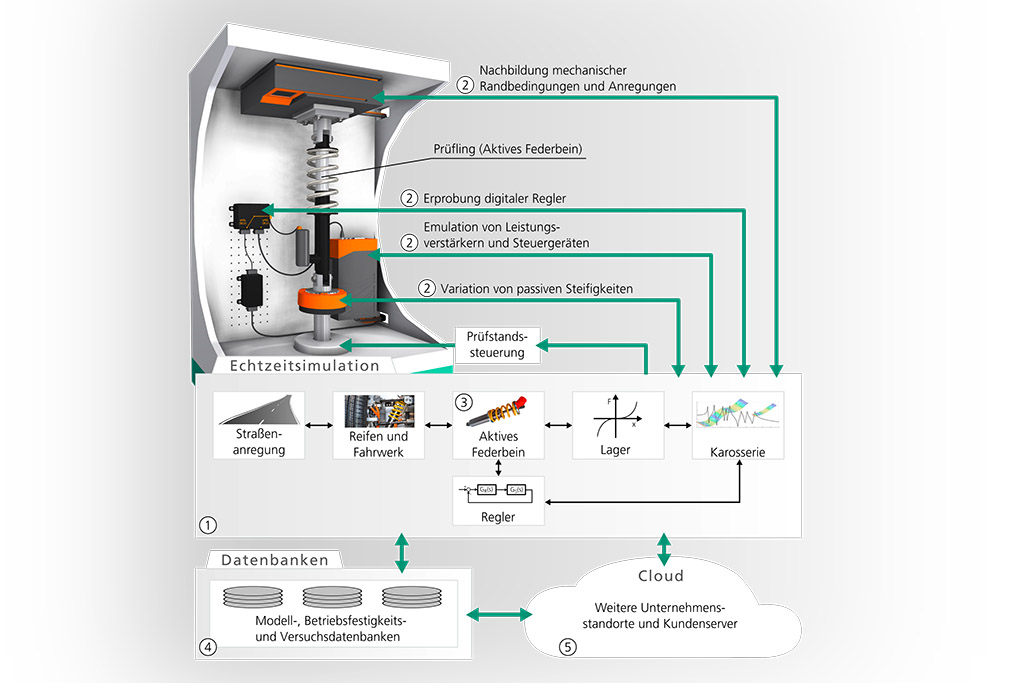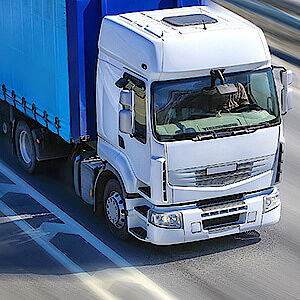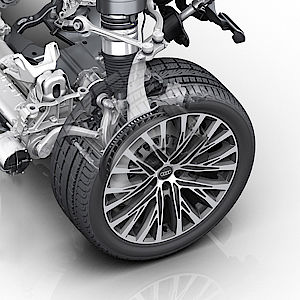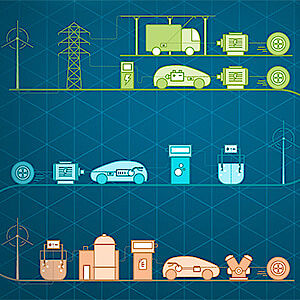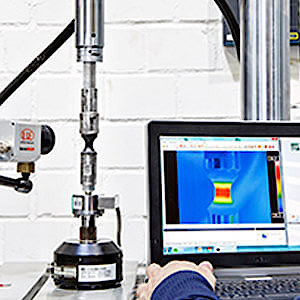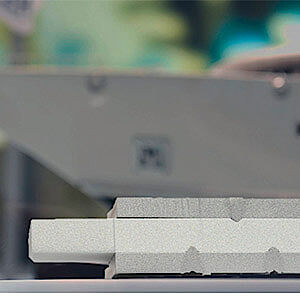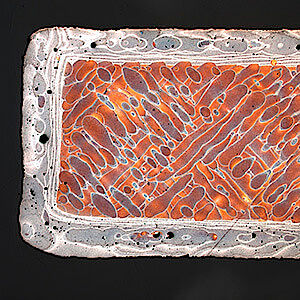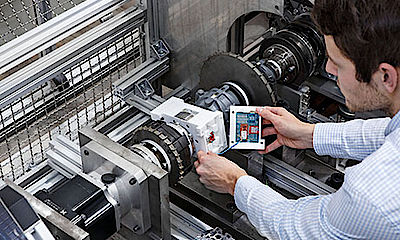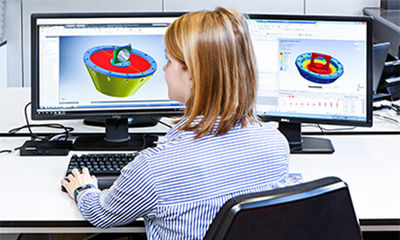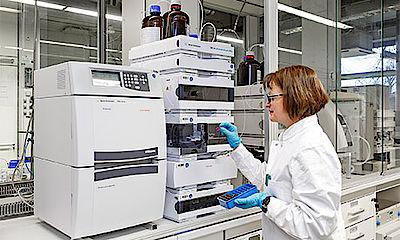Structural durability testing for active chassis systems.
Active suspension, active stabilizer, active rear-wheel steering, hardware-in-the-loop testing environment
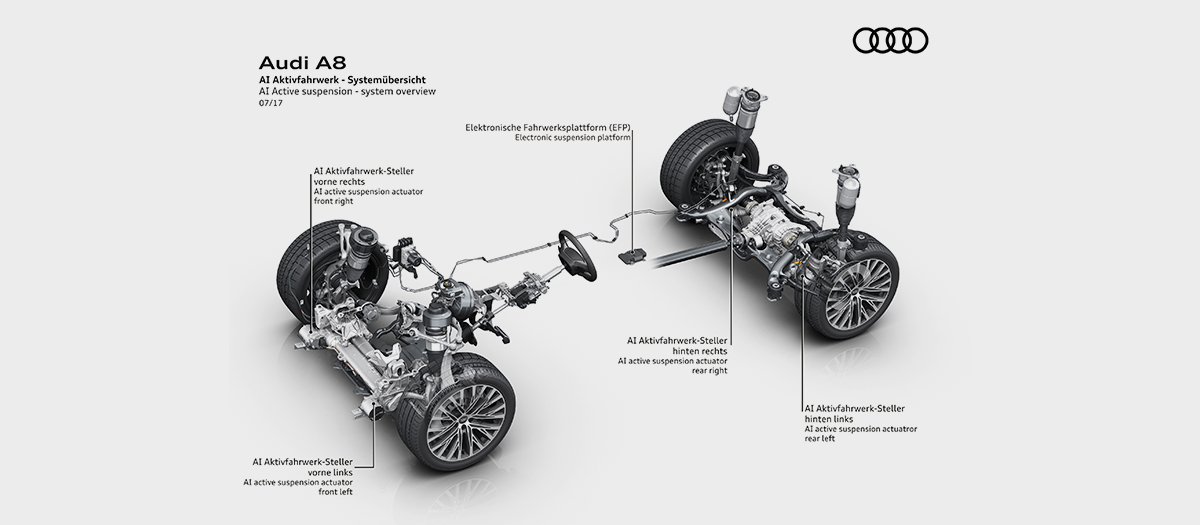
Truly active chassis systems, i.e. systems with integrated actuator for active application of forces, paths or moments, are currently finding their way into various vehicle models, in particular of premium suppliers: With active rear-wheel steering, active stabilizers and active suspensions, manufacturers are able to mitigate the conflicting objectives of comfort and driving safety. Especially in the increasingly popular SUVs and other heavy-weight vehicles with increased center of gravity, any disadvantages in driving dynamics can be significantly reduced through situational coordination of vehicle performance.
Active high-level adjustment of the chassis to the individual customer demands thus creates a truly distinguishing factor from the competition. However, active chassis systems place additional requirements on structural durability verification and reliability assessment. Upgrades of the testing environment in the Fraunhofer LBF laboratory help ensure high reliability of the structural durability tests, even under the new boundary conditions.
Active chassis systems require rethinking of traditional structural durability testing in the laboratory. With the emergence of adaptive damper systems, the question already arose as to what impact the possible change in the shock absorption characteristics has on the loads in the chassis and, consequently, how this impact should be taken into account in the structural durability verification of the chassis or even the whole vehicle on the test bench.
Studies at Fraunhofer LBF in 2010/2011 showed that choosing a uniform, hard shock absorption setting in the structural durability testing was sufficient for the systems of the first generation with relatively limited variation possibilities of the shock absorption characteristic. The conservative approach to a design/test with a hard shock absorption setting meant no significant deviations in the component loads compared to a dynamic real-time control and thus a good compromise between effort and quality.
However, current and future active chassis systems offer such a high level of adaptation variance that their characteristic settings/setting parameters have a significant impact on the loads originating in the chassis. The previous procedure is no longer efficient for these systems. There is a quest for solutions to two fundamental questions: In the future, the settings and control signals for the adaptive or active chassis systems, which are appropriate for the respective vehicle loads, must also be applied in trials in order to correctly simulate the component loads. Also, time-lapse tests must be developed for the new active systems, whereby in the context of electromobility, high-voltage components may also need to be included.
Control signals from driving test measurements or calculation models
To solve the first question, scientists at the Fraunhofer LBF are using two alternative methods: On the one hand, it is possible to control the active chassis systems with measured signals from driving test measurements, which are also correlated with overall system loads that are taken from measurements (CAN/rest-bus simulation). As an alternative, there is a second method that offers the option to calculate the control signals for the active chassis systems using a vehicle model, extended to include a model of the controller if necessary, on real-time hardware. In this process too, the forces, paths or moments of the active systems are adapted to the other system loads, such as the driving situation and vehicle or load status. In addition to a purely model-based calculation of all system variables, measured signals from sensors can also be included that are in the system being tested.
The load-dependent characteristic of the active systems lead to challenges on the test bench during generation of the final control signals during the iteration process. Therefore, LBF uses virtual imagery or digital twins of the test benches and chassis systems in order to develop efficient and targeted converging iteration strategies for the final system tests in advance.
Method development for time-lapse testing of active chassis systems
Within the context of the second question, the experts at Fraunhofer LBF are currently developing methods in projects to evaluate and test active/mechatronic systems with regard to their system reliability. These methods allow Fraunhofer LBF to subject active chassis systems, or chassis systems that can be adapted over a wide range, to reliable structural durability verification. It also enables entire vehicles equipped with active chassis systems to be tested. In all cases, the test bench control continues to encompass the complete test control with all monitoring and safety functions.
Customers benefits
Vehicle manufacturers and their suppliers benefit from these tools and can have their active chassis systems protected at Fraunhofer LBF with regard to their reliability.

“The flexibly applicable technologies 'residual bus simulation' and 'real-time vehicle models' can be integrated into the established test environments. These tools enable the Fraunhofer LBF team to secure active chassis systems in terms of reliability.” Marc Wallmichrath, Grad. Eng.
Contact
- Marc Wallmichrath, Grad. Eng.
- Phone: +49 6151 705-467
- marc.wallmichrath@lbf.fraunhofer.de
